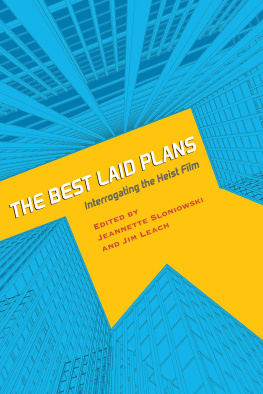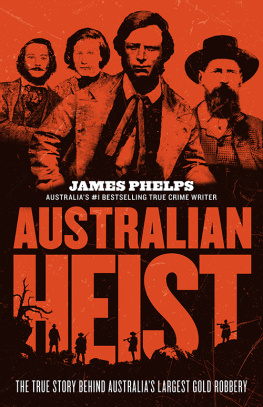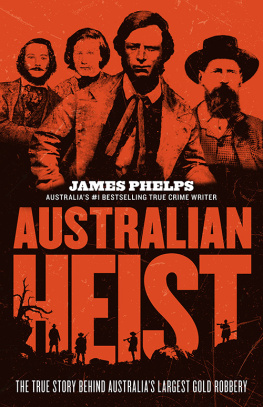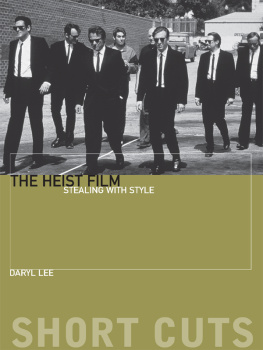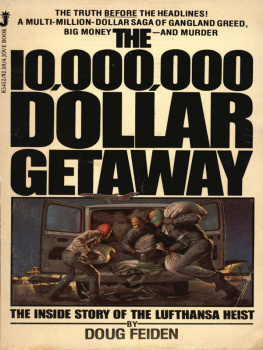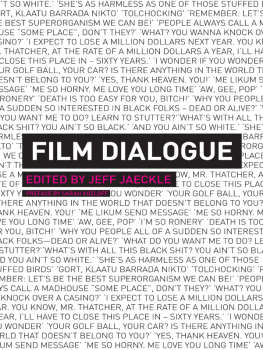
Contemporary Approaches to Film and Media Series
A complete listing of the books in this series can be found online at wsupress.wayne.edu.
GENERAL EDITOR
Barry Keith Grant
Brock University
ADVISORY EDITORS
Robert J. Burgoyne
University of St. Andrews
Caren J. Deming
University of Arizona
Patricia B. Erens
School of the Art Institute of Chicago
Peter X. Feng
University of Delaware
Lucy Fischer
University of Pittsburgh
Frances Gateward
California State University, Northridge
Tom Gunning
University of Chicago
Thomas Leitch
University of Delaware
Walter Metz
Southern Illinois University
2017 by Wayne State University Press, Detroit, Michigan 48201. All rights reserved. No part of this book may be reproduced without formal permission. Manufactured in the United States of America.
Library of Cataloging Control Number: 2017950916
ISBN 978-0-8143-4224-4 (paperback) | ISBN 978-0-8143-4225-1 (ebook)
Wayne State University Press
Leonard N. Simons Building
4809 Woodward Avenue
Detroit, Michigan 48201-1309
Visit us online at wsupress.wayne.edu
For
Zoya, Ethan, and Christian
James and Abigail
Contents
Acknowledgments
We would like to thank Rob MacMorine, film and video technician in the Department of Communication, Popular Culture, and Film at Brock University, for his help with the preparation of our manuscript.
William Denton, associate librarian at the York University Library, gave assistance with his amazing knowledge of hard-boiled slang.
Many thanks to Annie Martin, senior acquisitions editor at Wayne State University Press, for her patience and encouragement throughout the completion of our manuscript. And, of course, to our colleague at Brock University, Barry Grant, for his kindness and editorial advice. Thanks also to Sandra Judd for her thoughtful and thorough copyediting of the text before publication.
Jonathan Rayners Masculinity, Morality and Action: Michael Mann and the Heist Movie was first published in Criminal Visions: Media Representations of Crime and Justice, ed. Paul Mason (Cullompton, Devon: Willan Publishing, 2003). Reprinted by permission of the author.
Hamilton Carrolls September 11 as Heist was first published in the Journal of American Studies 45 (2011). Reprinted by permission of the author and Cambridge University Press.
Introduction
... of Heists and Men

Jeannette Sloniowski and Jim Leach
The heista carefully organized robbery of a bank, jewelry store, casino, or other commercial institutionhas been a persistent and popular mainstay of popular cinema. The central question addressed by our contributors in this collection is why films about heists have proved so appealing to audiences over many years and in diverse cultural contexts.
In terms of genre theory, there is much uncertainty as to how to designate the heist film. Some critics have treated it as a genre, others as a subgenre of the gangster film or as a subgenre of the crime film more generally. Rick Altman, rather surprisingly, calls it a failed genre because it never developed a stable syntax (225) that could organize the semantic building blocks (219) into a coherent structure. This is odd because, in Altmans terms, the heist film has a very well defined syntax derived from the planning, execution, and aftermath of a major robbery, as well as a distinctive number of narrative variations such as the revenge, the comedy/parody, or the social issue narrative. Since this is the case, and because it shares many of its semantic features and much of its iconography with the gangster film and other crime films, such as the police procedural and the semidocumentary film noir, to say nothing of Westerns and war films concerned with crime, we think it most productive to see the heist film as a subgenre of the crime film, although, given the heist films highly recognizable syntactic elements, it is not surprising that others, including some of our contributors, will continue to regard it as a fully fledged genre. This issue of generic definition is complicated in no small part due to what John Scaggs calls the bewildering variety of different versions of the crime thriller (108). As we shall see, the heist subgenre is filled with hybrids of differing narrative structures and cross-generic conventions.
We have no wish to offer a prescriptive theory of the heist film, but it is useful to outline the normal features of the subgenre, acknowledging that individual films will deviate from these norms. All genre films are combinations of convention and invention but if the deviations become too great, the film may slip into a different generic territory: a film depicting a professional gang carrying out multiple robberies is best seen as a gangster or a bandit-gangster film. The most clearly definable heist films usually focus on one carefully planned major robbery; the gang usually consists of men who have been recruited for this one job and who may not have a criminal record; and the narrative is usually divided into three more or less distinct stages: recruiting and planning, execution, and aftermath. The amount of attention given to each of these stages can vary considerably, as in those films that concentrate mainly, after the heist is carried out, on the difficulties in getting away with the crime, the double-cross, or the revenge of the target of the heist (often the Mob).
As examples of the possibilities offered by these structural variations, we might compare Dead Presidents (The Hughes Brothers, 1995), in which the elaborate and bloody heist occurs only after long sections dealing with the coming-of-age of the protagonist and his experiences in the Vietnam War, with Reservoir Dogs (Quentin Tarantino, 1992), which omits the planning and the heist completely and deals only with the bloody aftermath. We might also distinguish between those heist films whose narratives are entirely from the criminals point of view and those, like Robbery (Peter Yates, 1967) and Heat (Michael Mann, 1995), in which their actions are intercut with the police investigation. Martin Rubin calls Heat a hybrid of heist film and police thriller (34).
Tone is also a key factor, ranging from films that explore the social issues surrounding the thieves, including issues of race, capitalist exploitation, and consumer culture, to comedies where the ineptness of the gang clearly parodies the emphasis in the heist proper on competence, precision, and perfect timing. As Rubin suggests, what links the serious and comic films is the presence of irony, with the protagonists defeated more often by twists of fate than by the forces of justice (122). Taking his cue from the ending of The Killing (Stanley Kubrick, 1956), in which a small dog thwarts the getaway, Mark Bould refers to the quirk that brings the best laid plans to disaster as the yappy little dog (89). Most, but not all, heist films feature a yappy dog, and the variations in tone that this device makes possible contribute to the uncertainty about how to name the subgenre.
So far we have referred to the films in question as heist films, but many critics (including Altman) have followed Stuart Kaminsky and defined them as big caper films (79). According to the Online Etymology Dictionary, caper originally meant playful leap or jump, then came to mean prank, and was first associated with crime in 1926. The word heist, used as a noun since 1930, originated in American slang and is probably a dialectal alteration of hoist, meaning to lift in its slang sense of shoplift. While the playful connotations of caper do capture the spirit of certain heist films, especially from the 1960s on, the term does not suit the many dark crime films to which it has often been applied. In these films, criminals often speak of the job as a caper, as Doc does in
Next page
